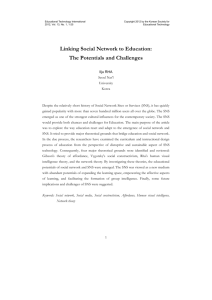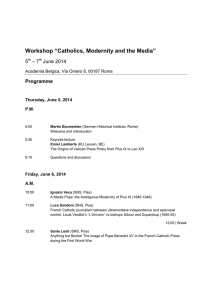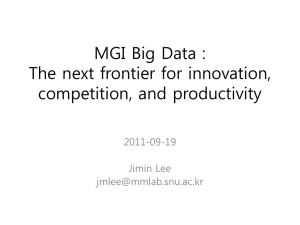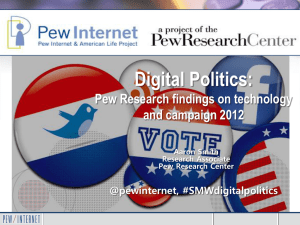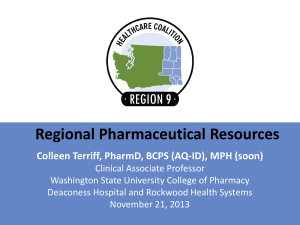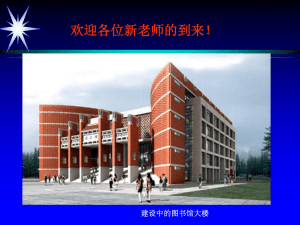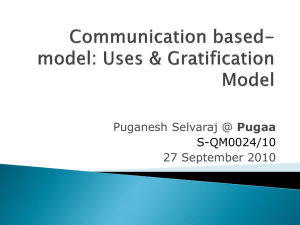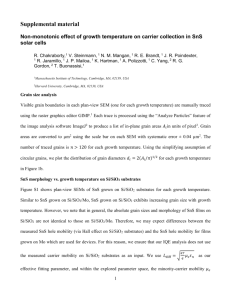efremenko
advertisement
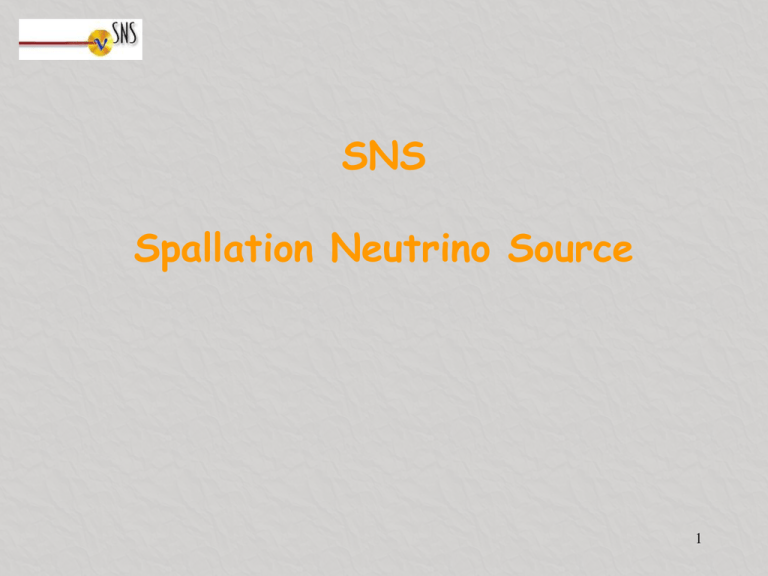
SNS Spallation Neutrino Source 1 SNS layout Stripping foil 1.0 GeV proton linear accelerator Main target Accumulator ring 2 SNS Parameters Proton beam energy – 1.0 - 1.4 GeV Intensity - 9.6 1015 protons/sec Pulse duration - 380ns(FWHM) Repetition rate - 60Hz Total power – 1.0 3 MW Liquid Mercury target 3 Target building Proton Beam 4 5 Mercury target Mercury Inventory – 20 t Flow rate 340 kg/sec Vmax 3.5 m/sec Tin 600C Tout 900C Mercury lasts the entire 40 year lifetime of SNS no change is required 6 Stainless steel vessel should be replaced periodically Some Details of Interaction in the Target Average interaction energy is ~1.1 GeV Average interaction depth ~11 cm Proton interacts near the front part of the target 7 DIF vs. DAR Pion Spectra 200 MeV/c pions range in mercury is ~ 5 cm Very few pions have a chance to decay before coming to the rest Because of the bulk Mercury target, SNS is a Decay At Rest facility !! 8 Neutrino Production + Hg + e 0.13 e+ 0.09 p - 1.3 GeV 99.6% At the first approximation: N +/proton = 0.14*E(GeV)-0.05 For E~0.8-1.5 GeV ISIS, LANSCE SNS 9 Actual spectra of neutrinos from SNS Neutrino spectra well defined in SM Energy e and are in the different time intervals Time 10 Neutrino Rates Number of protons on the target for 1.1 mA at 1.3 GeV is 0.687·1016 sec-1 Number of each flavor neutrino produced by one proton is 0.13 SNS live time is 2/3 of the year Number of each flavor of neutrinos produced at SNS is 1.9·1022 year-1 Caveat: There is larger flux of antineutrinos from decay of radioactivity in the target However, heir energy is a few MeV and almost continues in time. We did a few attempted to calculate those, but all grad students failed to deliver robust result. It would be nice to finish this.... 11 Cross Sections Integrated over SNS spectra. Reaction Integrated Cross Section ee- eee- ee12C 12Ngs ee12C e 12C* 12C 12C* e56Fe 56Co e- 0.29710-43 cm2 0.05010-43 cm2 0.9210-41 cm2 0.4510-41 cm2 0.2710-41 cm2 ~2.510-40 cm2 SNS delivers ~ 1.9·1022 neutrinos per year 12 Necessary detector mass KARMEN LSND SNS Beam Info Mode: Target Power on Target: 1003.24 kW Charge to Target: 18.5E-6 C Proton Energy: 910.0 MeV Ring Frequency: 1.041 MHz Beam Rate: 59.9 Hz MPS Mode: 1 mSec SNS status 14 SNS Status Long Term 15 SNS Calendar 16 Cosmic rays BG estimation Lets assume shielded bunker with area of 25 m2 on the surface SNS duty factor is 410-4 This effectively reduce flux to 105 muons and ~600 neutrons per day entering enclosure We need one meter of steel overburden to reduce hadronic component of atmospheric showers and hermetic veto with efficiency of 99% Our estimations shows that expected number of untagged neutrons events in the detector is a few per day. This is below expected neutrino event rates Extra factor can be expected from PID in detectors. 17 SNS induced BG Most dangerous B.G. is from SNS neutrons Analysis is complicated because many uncertainties still exist. We know for sure that environment is OK for humans. However neutrinos detectors are much more sensitive then humans! We considered three major sources: 6.3 m From the neutron instruments Space 1.7 m Allocated For Neutrinos 4m Proton Beam Target From the tunnel 18 Target Neutrons Full 3D MSNPX calculations were performed till ~2 m Coupling tool MTD was used to couple to 2D DORT code to propagate further. Instrumental floor was modeled up to distance of 30 m 19 Neutrons from the Target 20 Neutrons from the Tunnel Similar Calculations were done taking into account beam losses Beam losses ~ 1W/m (Linear source) 21 Neutrons from the Tunnel 22 SNS induced neutron flux High energy neutrons at 20 meters can be eliminated using time cut To reduce low energy neutrons (neutron gas), extra shielding and neutron absorbers are required Just moving out without erecting extra shielding: •Front side (target) 1/R2 •Right side (instruments) required detailed study •Left side (tunnel) 1/R
